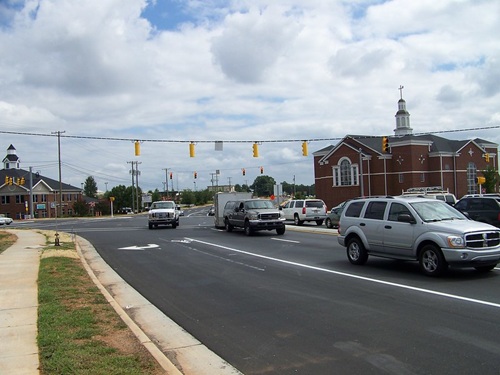Upward and downward population shifts across several states over the past year may impact transportation planning on several levels, especially as part of land-management strategies.
[Above photo by Utah DOT.]
Data compiled by the U.S. Census Bureau and indicate that the populations of Nevada and Idaho grew the most percentage-wise – some 2.1 percent each – between July 1, 2017, and July 1, 2018, followed by Utah at 1.9 percent, Arizona with 1.7 percent, and Florida and Washington, which tied for fourth at 1.5 percent each.

In Utah, the rate of population growth convinced Gov. Gary Herbert (R) to devote more of his state’s budgetary resources to housing, land-management, and transportation needs.
“With the available land along the Wasatch Front becoming ever more limited, understanding the interrelationships between land use, transportation, housing, water, air quality, and revenues is essential for preserving our quality of life,” he explained in a statement on Dec. 6. “Affordable, thriving communities require physical infrastructure, including transportation and water infrastructure, along with breathable air and open space where residents can recreate.”
[The completion of four new interchanges along Bangerter Highway by the Utah Department of Transportation in November last year represents one aspect of such transportation needs.].
To that end, Gov. Herbert proposed spending $30 million to help fund transit-oriented development and affordable housing, along with establishing more public parks, as part of the $19 billion budget he offered for Fiscal Year 2020.
“Individuals and families in Utah are looking for affordable homes, places to shop, parks and trails where they can recreate, safe and smart schools where they can learn, clinics and hospitals where they can get quality health care, and sanctuaries where they can worship,” Gov. Herbert explained.

“All of these important activities that are part and parcel of our unprecedented quality of life require the infrastructure of safe, well-functioning roads, transit, and utilities,” he said.
The Census Bureau’s national and state population estimates also indicated population declines in nine states, including New York (down 48,510), Illinois (45,116), West Virginia (11,216), Louisiana (10,840), Hawaii (3,712), Mississippi (3,133), Alaska (2,348), Connecticut (1,215) and Wyoming (1,197).
Such declines are also spurring more transportation investment on the part of state governments as a way to help convince residents to stay, as well as attract new ones.

For example, in June, New York Gov. Andrew Cuomo (D) announced $57.7 million in state and federal funding for 136 rural public transportation projects statewide – largely for bus service – that’s being administered by the New York State Department of Transportation and supported through grants from the Federal Transit Administration.
“Transportation infrastructure is the lifeblood of our economy and the key to future growth,” Gov. Cuomo said in a statement. “This funding will bolster upstate mobility operations and help ensure that all New Yorkers, regardless of their location, will have a transportation infrastructure they can rely on.”
Other U.S. population trend data released by the Census Bureau includes:
- As a whole, the U.S. population continues to grow – expanding by 0.6 percent to over 328 million by July 1, 2018 – due to both “natural increase” and international migration.
- Though international migration was slightly higher last year (978,826 compared to 953,233 the year before), natural increase was slightly lower last year (1,041,487 compared to 1,122,546 the year before).
- Texas had the largest numeric growth over the last year, with an increase of 379,128 people. Texas grew both from having more births than deaths and from net gains in movers from within and outside the United States.
- Florida had the highest level of net domestic migration in the last year, at 132,602. Since 2010, Florida has gained a total of 1,160,387 people from net domestic migration.
- Washington, D.C., reached a population of 702,455 in July 2018, surpassing 700,000 for the first time since 1975; a change is due primarily to an influx of people from other parts of the country that began early in the decade. While the increase has begun to slow, the District of Columbia still grew by almost 1 percent last year.
The Census Bureau stressed that its estimates do not reflect the effects of Hurricane Florence in September 2018, Hurricane Michael in October 2018, and the California Wildfires.
During 2019, the Census Bureau will release estimates of the 2018 population for counties, cities and towns, and metropolitan and micropolitan statistical areas, as well as national, state and county population estimates by age, sex, race and Hispanic origin.
 Top Stories
Top Stories


